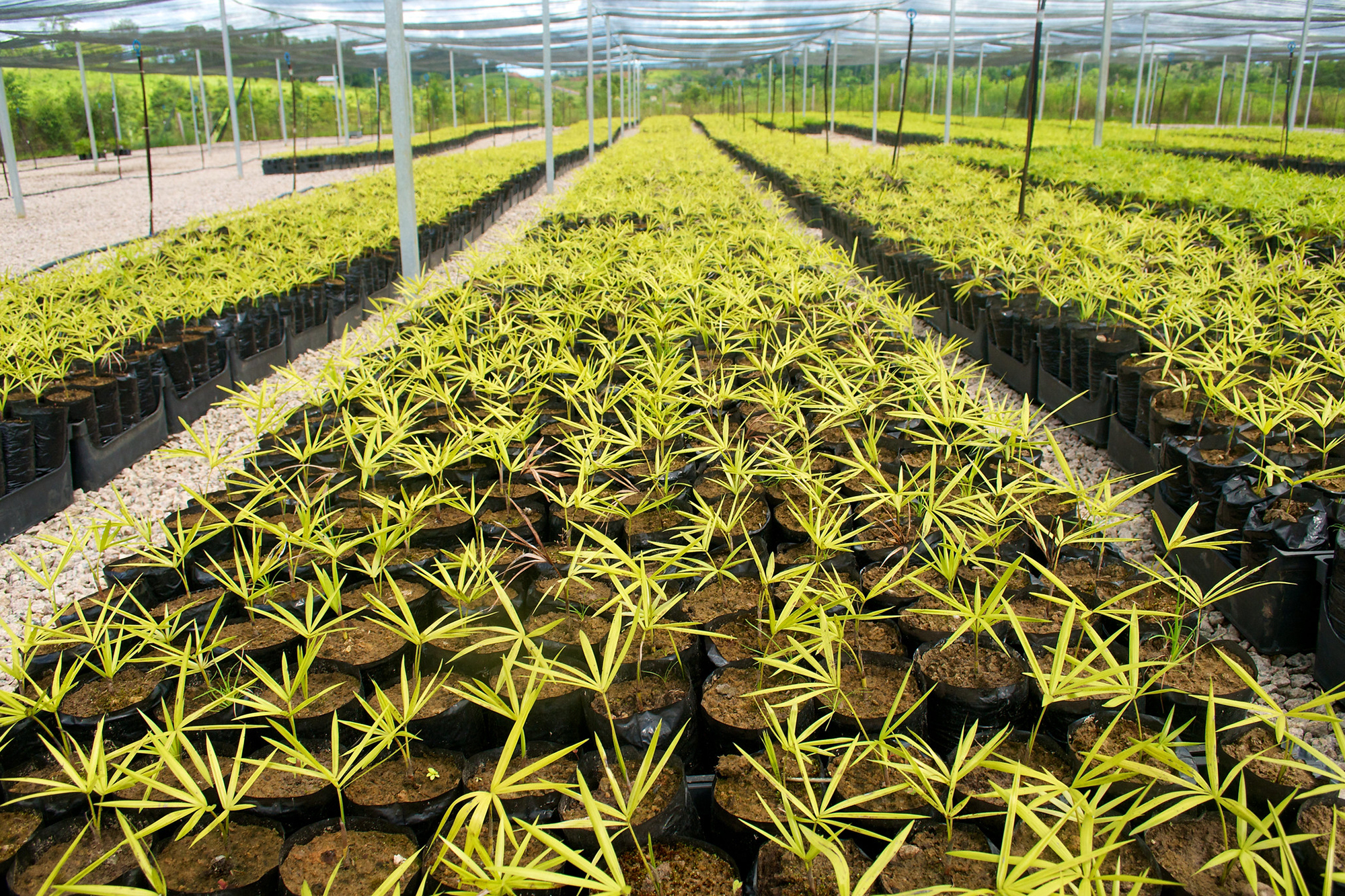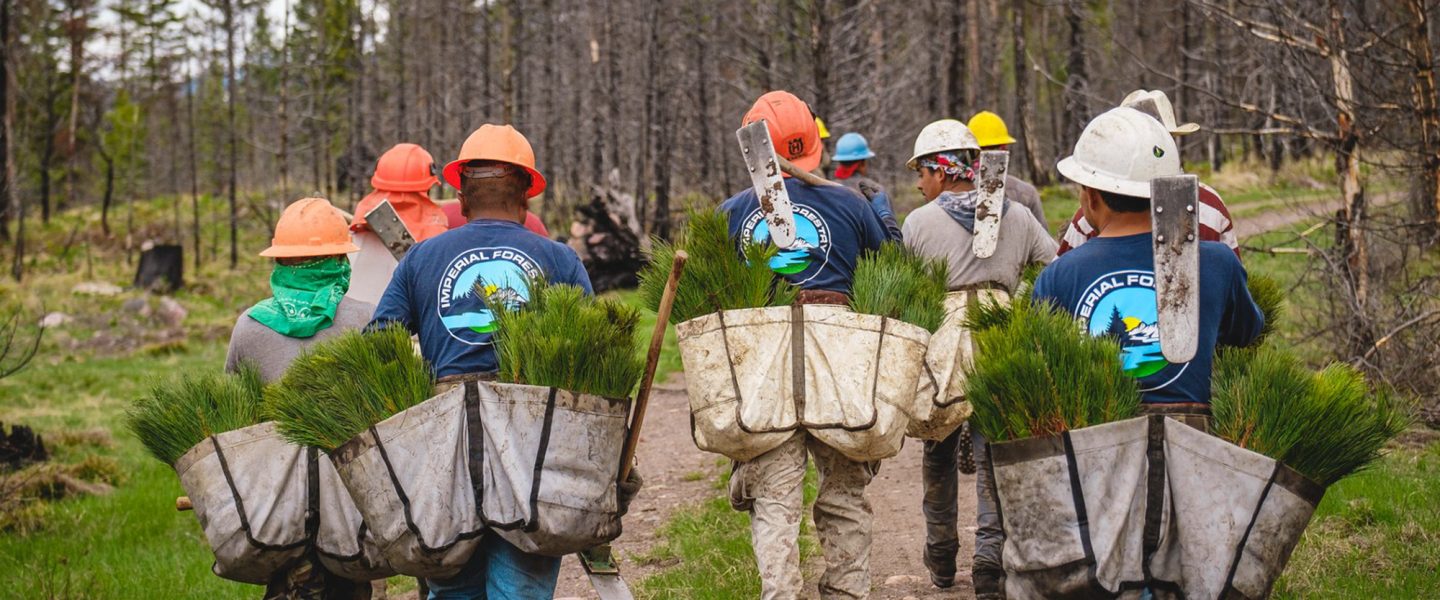Why Tree-Planting Schemes Aren’t a Silver Bullet
Numerous global reforestation efforts are underway, but getting long-term benefits is harder than it looks, and some projects can do more harm than good.
|
Listen To This Story
|
The race is on to plant trees. The World Economic Forum launched a 1 trillion trees initiative in 2020. The Bonn Challenge aims to restore 865 million acres of deforested landscapes by 2030. Individual countries have set their own targets, too, like Canada’s announcement to plant 2 billion trees in 10 years.
These reforestation efforts have been spurred by the need to store more carbon to fight climate change and help create habitat for dwindling biodiversity. Planting more trees can also help reduce air pollution, prevent erosion, and provide cooling shade for everyone from city dwellers to creek-swimming salmon.
Seems like a perfect solution to a lot of problems, including two of our biggest: climate change and biodiversity loss. Unfortunately, it’s not as easy as it may seem.
Wrong Place
There are a lot of ways that tree planting can go awry — especially as people aim to hit arbitrary metrics. This includes planting trees in the wrong places, like in native grasslands or wetlands. Or planting nonnative trees that take up too much water or create other dangerous conditions.
Alberta, Canada has learned that lesson. In the 1980s the government decided to create forests out of peat bogs by swapping swamps for black spruce. Here the goal wasn’t to help the environment — it was to create loggable forests — but it should still serve a warning.
“The new spruce trees gorged themselves on the groundwater out of the swamps, growing unusually wide canopies — which choked out the peat moss,” the Pulitzer Center and National Geographic reported in 2019. “A different, drier moss replaced it — kindling in the place of fire retardant — and as the land dried the trees grew into enormous stores of fuel.”
The result was a massive forest fire in 2016 that tore through the town of Fort McMurray, destroying 2,400 homes.
Short-Lived
Even tree planting with good intentions can come up short. And about half do.
A recent study in the journal Philosophical Transactions of the Royal Society B: Biological Sciences examined 176 restoration sites in tropical and subtropical forests in Asia where the most common restoration practice is planting nursery-grown saplings. On average, researchers found that tree mortality was 18 percent after one year, but that jumped nearly 50 percent beyond 10 years.
“In practice, there has been an over-emphasis on numbers of trees planted as a metric for forest restoration success, rather than managing, protecting and monitoring how these planted trees perform over longer timescales,” the researchers wrote.
Getting trees in the soil is only part of forest restoration. Caring for those trees is also crucial.
“We recommend that tree-growing efforts set targets for the area of forest restored after 10, 20 or 50 years, rather than focusing on numbers of seedlings planted,” restoration ecologists Karen D. Holl, of the University of California, Santa Cruz and Pedro Brancalion of the Universidade de São Paulo wrote in The Conversation.

But even a lot of living trees don’t make a forest if efforts are short on diversity. Many reforestation projects function more like plantations.
The researchers of the Philosophical Transactions study found that 625 tree species had been planted at the sites they studied, but the richness at most sites was low. That’s problematic for biodiversity, but also for carbon sequestration, as another study published in Nature in April confirmed. Those researchers found that “greater tree diversity is associated with higher soil carbon and nitrogen accumulation.” If tree planting is done with the goal of sequestering more carbon, species diversity should be a consideration, they say.
Ensuring Funding
Success also requires sustained effort and money.
This can be hard to achieve. Most projects are allotted short-term funding, but restoration is a long-term endeavor. “Currently, funding is typically provided only for the restoration intervention to be implemented, as opposed to ongoing maintenance, and the various infrastructure requirements around a project,” found another study in Philosophical Transactions. There’s also a lack of information about how much money is required to sustain these long-term efforts.
It’s a lesson being learned now by backers of “one of the world’s most ambitious ecological-restoration schemes,” according to Nature.
Africa’s Great Green Wall initiative aims to restore nearly 250 million degraded acres across the Sahel by 2030. The project was initially planned as a 4,300-mile swathe of trees across 11 countries from Senegal to Djibouti, but now includes an additional focus on protecting existing forests, improving soils, and other restoration efforts.
As it’s going now, it’s on track to achieve only 30 percent of its target. Part of the problem is stable and equitable funding, a United Nations report found. “The report suggests that trust between the African Union and international donors is in short supply,” reported Nature. “Donor nations seem to be picking and choosing which countries to invest in, with a preference for those in relatively stable regions.”
That means the areas that are being passed over are the ones that need the most help.
Enabling Success
There are ways to ensure better outcomes from reforestation efforts by addressing ecological and social factors.
It starts with understanding what native trees should grow well in an area and having a plan — and funding — for who will manage the project for years after planting.
When it comes to ecological issues, researchers of the Philosophical Transactions study about restoration efforts in Asia found that larger seedlings often fare better, and restoration was more successful when the previous disturbance was less intensive.

The proximity of newly planted trees to those already growing can be beneficial.
“An established tree canopy facilitates rapid colonization of planted seedlings’ root systems by mutualistic fungi, which are known to enhance seedling survival and growth, whereas soil physical, chemical, and biological properties may be more disturbed in open sites as a result of their disturbance history,” the researchers explained.
There are also a lot of social factors, including land tenure, governance, and community buy-in.
Local people should be involved in planning and monitoring of projects. “Initiating projects without appropriate engagement and buy-in from local communities may lead to social conflict, lost income, and displacement of people, which can actually increase deforestation,” wrote Holl in Climate & Capital Media.
Sometimes economic incentives are required, but that too, demands careful consideration.
A tree-planting program in Chile from 1974 to 2012 subsidized 75 percent of the cost of planting new forests. But it didn’t go as hoped.
“While it was intended not to apply to existing forests, lax enforcement and budgetary limitations meant that some landowners simply replaced native forests with more profitable new tree plantations,” the BBC reported. “Their study found the subsidy scheme expanded the area covered by trees, but decreased the area of native forest.” And that in turn led to more biodiversity loss and didn’t increase carbon storage.
It’s an important reminder that protecting existing forests is crucial. Any biodiversity and climate mitigation gains from new restoration efforts are offset by each acre of forest we continue to raze. And we know that older trees are even better at storing carbon than younger ones, which makes protecting old-growth and mature forests even more crucial.
“It is much more effective to prevent clearing of existing forests than to try to put them back together again,” wrote Holl and Brancalion. “And existing forests provide benefits now, rather than decades into the future after trees mature.”
This story by Tara Lohan was originally published by The Revelator and is part of Covering Climate Now, a global journalism collaboration strengthening coverage of the climate story.


